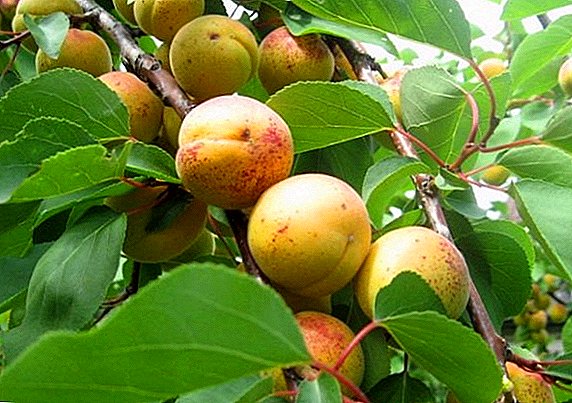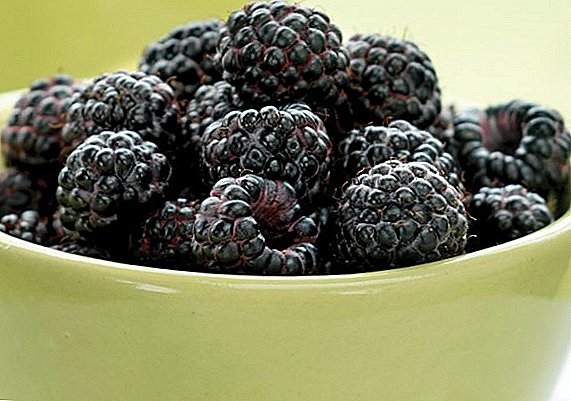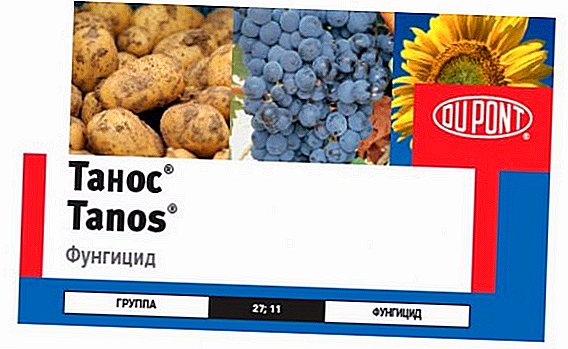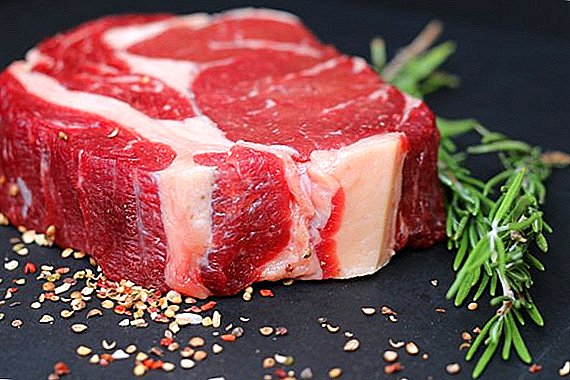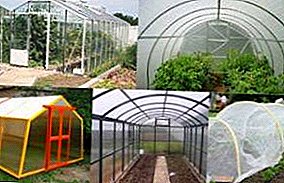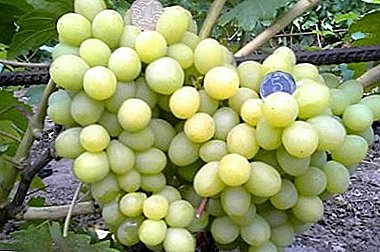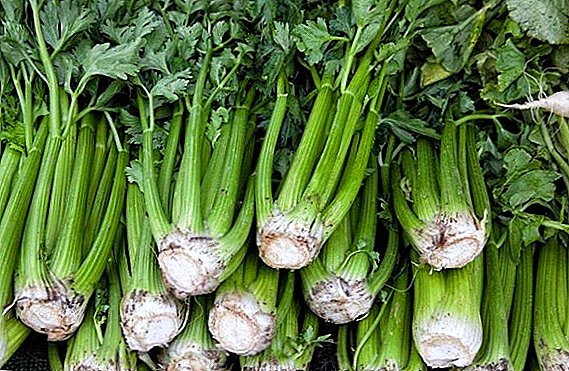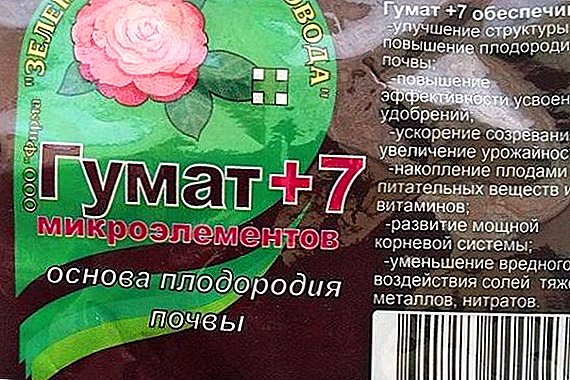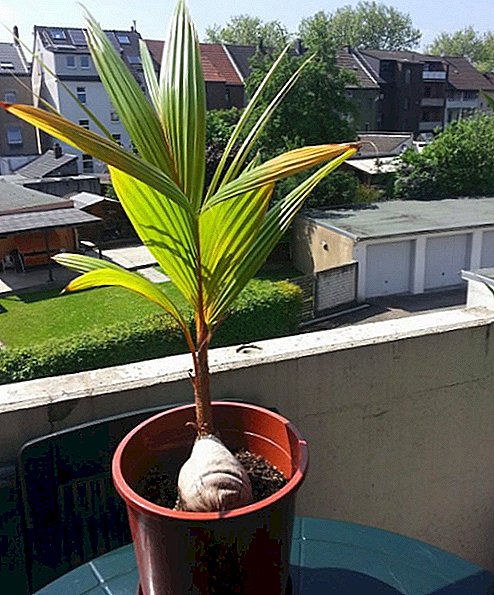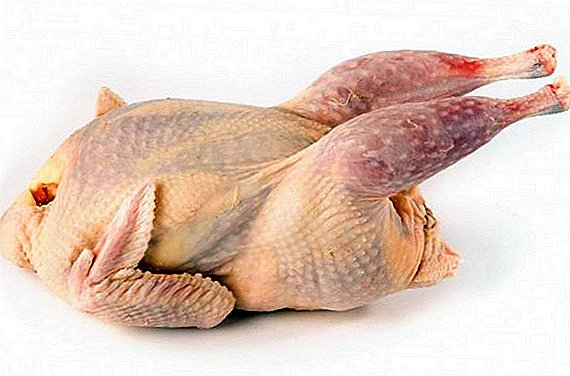 Pheasant meat is a true delicacy, so every year a lot of hunters go to the forest to get this bird. However, after the long-awaited game has finally been harvested, a new problem arises in connection with the cutting of the bird. A pheasant carcass is notable for its special tenderness, and in order not to damage it when dressing, certain rules must be followed. And the preliminary preparation of the carcass for cooking also has its own characteristics.
Pheasant meat is a true delicacy, so every year a lot of hunters go to the forest to get this bird. However, after the long-awaited game has finally been harvested, a new problem arises in connection with the cutting of the bird. A pheasant carcass is notable for its special tenderness, and in order not to damage it when dressing, certain rules must be followed. And the preliminary preparation of the carcass for cooking also has its own characteristics.
Kitchen tools
For high-quality pheasant cutting will require the appropriate inventory. Need to get:
- medium sized cutting board;
- set of kitchen knives "cook troika";
- kitchen tweezers;
- twine or nylon thread about 20 cm long;
- deep pelvis;
- kitchen device for scorching the carcass.

How to properly and quickly pluck
The initial processing of the bird begins with plucking the carcass. In most cases, this process is practically no different from plucking other birds, but it has its own secrets. Failure to comply with the rules may cause damage to tender meat, which will lead to the loss of its culinary value.
It is known that eggs contain a large amount of vitamins and nutrients. Read about the beneficial properties and methods of using pheasant eggs in cooking.
A pheasant pluck is performed as follows:
- First, the carcass must first be prepared for plucking - for this pheasant for several hours kept in the freezer. Meat of game differs in more dense structure than in domestic animals, therefore preliminary freezing of meat contributes to softening of its fibers. As a result, it is possible to more gently remove both large and small feathers.
- Plucking starts with the removal of the largest feathers. Do this in a deep pelvis to avoid the spread of plucked feathers around the room. The process is carried out carefully along the growth of plumage, so as not to damage the delicate skin. Feathers should be removed with small bunches, light jerking movements. But, if you plan to cook the whole bird, feathers should be removed individually, otherwise it will damage the delicate tissues of the carcass.
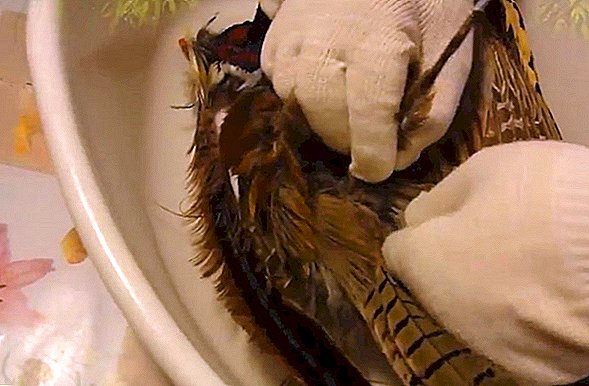
- After all large feathers are removed, it is necessary to proceed to the elimination of the main tail. The procedure is carried out on the same principle as the plucking of large feathers. At the same time, the removal of plumage should begin from the side of the tail, smoothly and gradually moving towards the head. For convenience, the skin should be slightly tightened - this will help not only to improve the efficiency of plucking, but also to avoid excessive damage to the carcass.
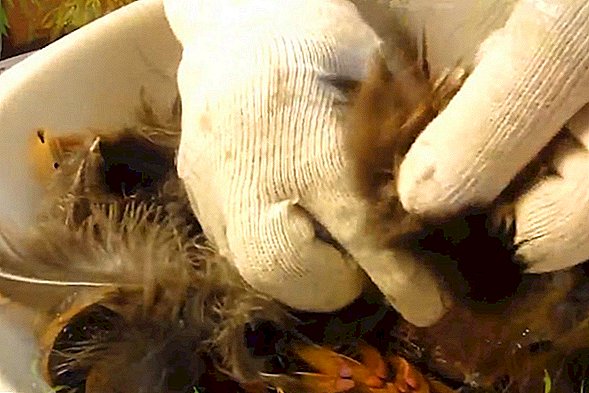
- At the end, the final cleaning of the bird from feather residues, as well as small and hard-to-reach feathering is carried out. To do this, use a special kitchen tweezers, with which you can easily remove even the smallest feathers.
We advise you to get acquainted with the best breeds of pheasants, as well as consider the characteristics of gold and white pheasant.
How to scorch down
After plucking a pheasant, a light downy feather remains on his carcass. It is possible to get rid of it only after a short singing under an open flame. Often, for these purposes use special kitchen gas burners. In the case of their absence, singing is carried out using a large lighter or on a gas burner.
The procedure is carried out very carefully, so as not to burn the skin. To do this, you should smoothly but sharply conduct an open flame on the remaining fluff on the skin. If possible, avoid prolonged contact with bare skin to prevent damage to the delicate tissue of the bird.  After the fluff is completely removed from the surface of the bird's body, it must be thoroughly washed under running water. It is best to use cold or slightly warm water for this, since hot water after aggressive singing of the carcass can adversely affect the integrity of the skin, or lead to a loss of the aesthetic value of the pheasant's carcass.
After the fluff is completely removed from the surface of the bird's body, it must be thoroughly washed under running water. It is best to use cold or slightly warm water for this, since hot water after aggressive singing of the carcass can adversely affect the integrity of the skin, or lead to a loss of the aesthetic value of the pheasant's carcass.
You will certainly be useful to learn all the features of breeding pheasants at home.
After washing, the final cleaning of the skin from residues of fluff is carried out using kitchen tweezers. If the procedure was carried out neatly and correctly, the skin of the pheasant’s carcass will not lose its integrity.
How to gut insides
Further processing of game cleared of plumage provides for the removal of its viscera. To do this:
- On the neck, right under the beak, cut an oblong hole.
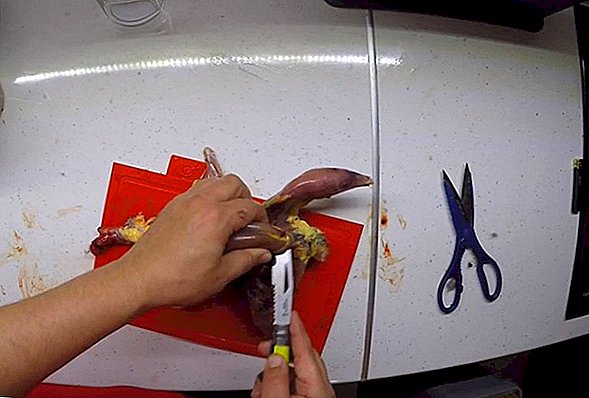
- In the resulting hole you need to grope the esophagus and cut it off.
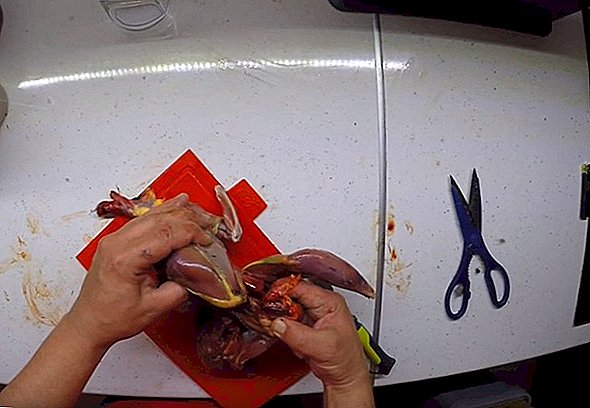
- After that, you need to carefully make an incision on the skin just above the goiter.

- Through a hole in the skin above the goiter, the larynx and goiter with the rest of the esophagus are carefully cut off. The upper part of the trimmed esophagus is tied up with a string or a nylon thread, otherwise its contents may stain the internal cavity of the bird.
- After that, from the anus along the belly to the abdominal bone an oblong incision is made. The abdominal cavity is opened carefully, otherwise the contents of the damaged intestine will contaminate the carcass.
- Two fingers (index and middle) are inserted into an incision in the abdominal cavity, and then all organs, except for the intestines, are carefully removed from the inside.

- After the organs are removed, a circular incision is made around the anus, and then the intestine is withdrawn through the incision.
- Gutted carcass is thoroughly washed under running water, and then dried using paper towels.
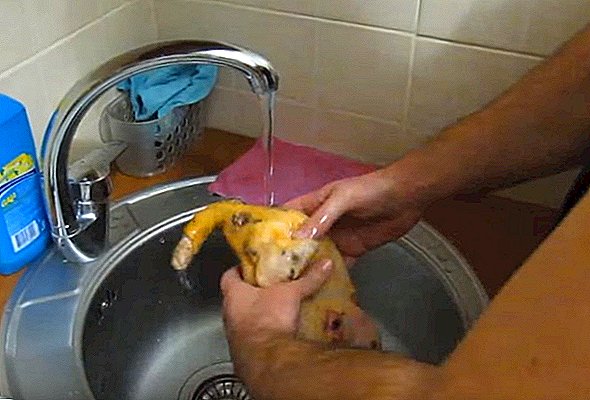
How to carve a bird for cooking
In most cases, the peeled and gutted game is baked whole, but as necessary, depending on the requirements of the recipe, the bird is divided into separate fragments for more convenient preparation. To do this:
- Cut off the head, then the lower part of the paws along the joint, down to the muscle tissue, and separate the neck from the carcass.
- Then put the game on the back of the breast up, take the thigh and make a cut above the joint to the bone. After that, one leg is separated along the joint, then the other.
- If the individual is rather large, then, if necessary, each leg can be divided into two parts. In this case, you need to grope the connecting joint, put a knife blade on it and with a smooth, slightly pressing movement along the joint, make a cut.
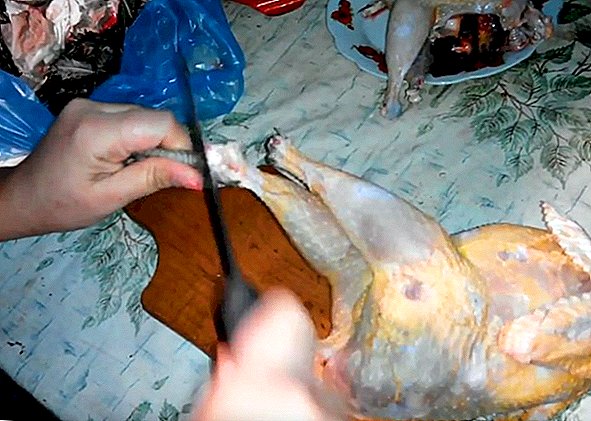
- After separation of the legs go to trimming the wings. Holding the wing with your hand, you need to find the place of its connection with the little body, and then with a slight pressing movement along the joint to separate it from the main part.
- Next, you should separate the back from the breast. To do this, the knife is inserted into the middle of the carcass, and then an incision is made on both sides parallel to the spine.
- If necessary, conduct the separation of the fillet from the sternum. The brisket is placed on a chopping board with the sirloin part up, and then along the sternum bone, the fillets are carefully cut from both sides.
Agree to catch a live pheasant, you need to make some effort. Consider popular proven ways to catch this bird.
Pheasant carcass is a delicate and exquisite product, therefore, in order not to spoil the meat, the bird must be properly cleaned and cut. Often, this does not require complex and highly specialized knowledge - just enough to get the instruction, the hardness of the movements, as well as patience.  Otherwise, excessive rush and carelessness can lead the exquisite product to full culinary unsuitability.
Otherwise, excessive rush and carelessness can lead the exquisite product to full culinary unsuitability.










